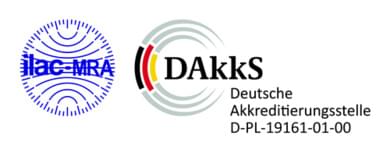Court decision: Covering of asbestos-containing adhesive residues is prohibited
When renovating asbestos-containing floor coverings, asbestos-containing adhesive residues often remain after dismantling the floor coverings. This adhesive must not merely be covered or sealed, according to a decision by the Arnsberg Administrative Court.
Owners and administrators of residential property had sued for the intention to replace asbestos-containing floor slabs in apartments with other coverings. The plaintiffs, however, wanted to leave the asbestos-containing adhesive residues remaining in place after removing the floor covering and merely seal or cover the adhesive residues. In some apartments, the work has already been carried out in this way.
Gefahrstoffverordnung (Ordinance on Hazardous Substances) states that adhesives must be tested for asbestos and must be removed in the event of asbestos exposure
Through an anonymous report, the State of North Rhine-Westphalia had become aware of this procedure and had pointed out to the plaintiffs that the have to comply with the Gefahrstoffverordnung (GefStoffV) and the relevant technical regulations. These documents stipulate that, when asbestos panels are being repaired, the adhesives under the panels must also be examined. If an asbestos load is determined, the adhesive residues must be removed.
Asbestos covering and sealing are prohibited activities (according to GefStoffV)
The owners and managers of the apartments mentioned above saw themselves in the right with their redevelopment procedure and went to court. The 6th chamber of the administrative court Arnsberg dismissed the complaint however. A reason for decision: In the sense of the danger material regulation the covering or sealing of asbestos-containing adhesives are classified as forbidden activities at asbestos-containing parts of buildings.
The relevant prohibition norm of § 16 Paragraph 2 Sentence 1 GefStoffV applies here, although the adhesive residues are not changed or damaged by the planned work. This is because the requirement for this norm is not the actual release of asbestos by the activity: Already the bare contact with the dangerous material is sufficient. The abstract danger to persons is sufficient for a prohibition and this risk already exists when working in the immediate hazard area of asbestos - i.e. also when covering or sealing adhesives containing asbestos.
Sealing or covering do not reduce hazard potential
Why is the sealing of adhesives containing asbestos not an exceptionally permitted demolition, renovation or repair work? – This category covers only the demolition or removal of structural elements. However, when sealing or covering adhesive residues containing asbestos, these are not removed. In addition, it is neither a matter of maintenance nor of renovation work in the sense of the Gefahrstoffverordnung, since the hazard potential of the asbestos-containing adhesive remains unchanged. After covering or sealing, the existence of the asbestos-containing adhesive may possibly be forgotten. Later work or the demolition of buildings could lead to unintentional and undetected release of asbestos fibres. The problem situation would therefore continue to exist, which contradicts the purpose of the regulations of the Gefahrstoffverordnung.
Check before renovation: Are asbestos-containing adhesives lurking under your floors?
As the current court decision shows, when renovating floor coverings containing asbestos, it is absolutely necessary to check the adhesives underneath. Asbestos-containing adhesives are often found under quare and light boards made from unplasticised PVC or PVC roll material. The asbestos content can be up to 15%. Whether and to what extent adhesives are contaminated with asbestos can only be determined by an asbestos analysis from the test laboratory.
Read more on our page: Asbestos analysis of organic adhesives
Sources for the court decision:


